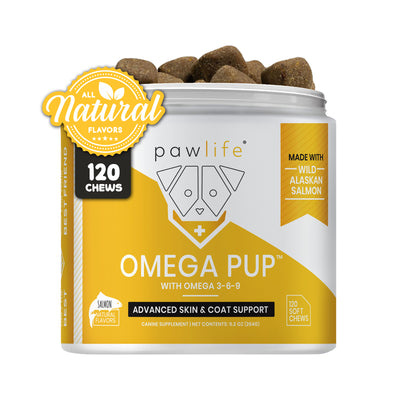What is heartworm disease?
Heartworm disease or dirofilariasis, caused by a parasitic worm called Dirofilaria immitis, is a serious and potentially fatal disease of your dog. Dogs are considered the natural host for heartworm 1. Heartworms that live inside the dogs become adults from larva, mate, and produce offspring. It doesn’t spread from dog to dog. The only option that your dog will get heartworm through the bite of an infected mosquito that serves as an intermediate host.

According to the U.S. Food & Drug Administration (FDA), this disease has been found in all 50 states of the USA. Heartworm primarily lives in the heart, lungs, and other blood vessels of your dog and results in inflammation, pulmonary hypertension, and ultimately heart failure. If untreated, multiplication of heartworm occurs rapidly and results in a high worm burden, ranges from 1 to 250 worms in your dog. The average life span of the worms in dogs is about 5 to 6 years. This diminishes the quality of your dog’s life, even after the parasite has gone.
What are the signs of heartworm disease?
The severity of heartworm disease can vary according to the worm burden (number of worms living inside the body), dog’s immune response, duration of the disease, and activity level of your dog. Symptoms of heartworm become less or asymptomatic (producing no symptoms) in the early stages of the disease. Dogs with a heavy worm burden that persists for a longer period will show obvious signs and symptoms.

The signs of heartworm disease may classify into four stages. These are given below 2:
- Class One: This includes asymptomatic or mild symptoms like an occasional cough in your dog.
- Class Two: This presents mild-to-moderate symptoms such as persistent cough with exercise intolerance after a period of moderate activity.
- Class Three: Here the dog shows more severe symptoms such as greater exercise intolerance with abnormal lung sound, decrease pulse rate, weight loss, loss of appetite, etc. Rapid breathing with the sign of heart failure is common in this stage. Other clinical findings include cyanosis (blue discoloration of skin and mucus membrane), syncope (fainting due to impairment of blood flow to the brain), and ascites (accumulation of fluid in the abdomen due to complete heart failure). The changes in the lungs and hearts are usually seen in the X-ray during this stage.
- Class Four: This is known as “Caval Syndrome”. This results in a life-threatening cardiovascular collapse due to the blockage of blood supply to the heart by heavy worm load. Prompt surgical removal of the worm from the artery is the only treatment option in this condition. Other common signs include labored breathing, dark colored urine, pale gums and mucus membrane, etc.
What is the treatment for heartworm disease?
The American Heartworm Society (AHS) develops a guideline to treat heartworm disease in dogs. Several FDA-approved drugs like melarsomine dihydrochloride used to kill adult heartworms in dogs. It's injected into the deep back muscles to treat dogs with class 1, 2, and 3 heartworm disease. Other drugs like doxycycline and ivermectin may also be used with the treatment of this worm, but these are costly. You can take suggestions from your veterinarian to select the best drug for your dog 1.
The best treatment for heartworm disease is prevention. There are many FDA approved drugs used to get the yearly prevention of heartworm disease in your dog. These drugs are applied either topical or administered as an oral tablet or injection form. Confirmatory diagnosis for heartworm disease includes blood tests. Once your dog becomes tested positive for heartworm disease, your veterinarian will prescribe medicine to treat this.
References
-
Haddock, K. C. Canine heartworm disease: A review and pilot study. Soc. Sci. Med. 24, 225–246 (1987).
-
Sarma, K., Mani, S., Nadu, T. & Science, A. Canine Heartworm Infestation and its diagnosis. (2011).













